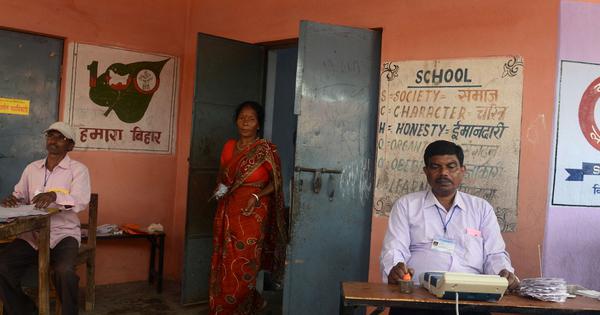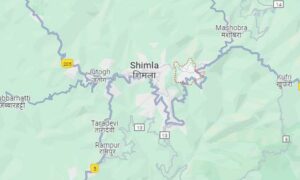
On October 28, the Congress party raised concern about the deployment of Indian Administrative Service officials from Gujarat as observers in the upcoming Bihar elections.
“Be warned people of Bihar!” it tweeted. “Vote chors have sent their men to you” – a reference from the party’s campaign accusing the ruling Bharatiya Janata Party of “vote chori” or stealing elections through malpractices.
A total of 243 IAS officers from across India have been sent to Bihar to monitor elections as general observers – one for each assembly constituency. Fourteen of them are from Gujarat.
The number may appear small but it is disproportionate to the state’s share of India’s total IAS officers currently in service. Put simply, Gujarat has 255 IAS officers but it has sent more observers to Bihar than Opposition-ruled West Bengal and Karnataka, which have a higher number of IAS officers.
Along with Gujarat, other BJP-ruled states and territories have contributed 68% of the general observers, despite comprising only 57% of the country’s total IAS officers, according to a Scroll analysis based on government and Election Commission data.
Similarly, 68% of assembly constituencies in Bihar have police observers from states and territories under BJP’s control, despite such officials making up only 59% of the total Indian Police Service officials in the country.
Strikingly, this number goes up further in seats which had close contests in the 2020 Bihar elections. In such constituencies, 80% of police observers are drawn from BJP-ruled states and territories.
Observers have to act as “eyes and ears” of the EC in an election, tasked with ensuring fairness, impartiality, and transparency in the electoral process. General observers, drawn from the Indian Administrative service, closely monitor the conduct of the voting and counting. Police observers, who are officials from the Indian Police Service, monitor law and order, force deployment and coordinate between the civil and police administrations.
Bihar will vote in two phases on November 6 and November 11.
What the data shows
On October 23, the EC published a list of general and police observers for the Bihar elections. The list includes names of constituencies and their corresponding observers. For each observer, among other things, the list mentions their parent cadre – the one they joined at the start of their service – and their office state – the current state they are serving in.
This analysis is based on the observers’ office state since that reflects their immediate controlling authority.
The EC has deployed one general observer each in the 243 constituencies and one police observer in each of the 38 districts in the state.
The data shows that large states with a bigger pool of IAS officers have sent more general observers to Bihar compared to smaller states.
For example, Uttar Pradesh has sent the highest number of general observers to Bihar. This is in keeping with its share of the total number of IAS officials in India, as on January 1, 2025, according to government data.
But the numbers are less representative among other large states. For instance, Maharashtra has 359 IAS officials, of whom 20 have been deputed as general observers for the Bihar polls. But only 10 IAS officials from West Bengal have been sent to Bihar, despite it having 368 IAS officials.
Overall, observers who are under the administrative control of BJP governments are overrepresented in Bihar.
This includes observers from the Centre-controlled AGMUT cadre, which covers Arunachal Pradesh, Goa, Mizoram and the union territories.
This 11% overrepresentation is equivalent to placing IAS officials deputed to Centre and BJP states in an extra 27 constituencies beyond what their proportional numbers would warrant.
Similarly, among police observers, a disproportional number of constituencies in the poll-bound state have been assigned IPS officials who work under BJP-led states and territories, as on January 1, 2025.
IPS officers under Centre’s control are especially overrepresented among police observers.
This means that at least 21 constituencies that should have been monitored by police observers from Opposition-led states and territories actually have observers from BJP-led states and territories.
Close contests
In seats that saw a close contest in the 2020 Bihar elections, the representation of general observers is much more proportional. But the representation of police observers becomes more disproportional.
In the 2020 polls, 20 constituencies had candidates who won by a razor-thin margin of less than 1% vote share.
This year, 12 of these constituencies – about 60% – have general observers who are officials under BJP-led states and territories.
Among them, observers from the Gujarat cadre have the highest presence in seats which saw close contests in 2020. However, Opposition-ruled West Bengal, Karnataka and Telangana, too, are overrepresented.
Among police observers, 80% of close contest seats have IPS officials who are currently posted in BJP-led states and territories.
Among them, officials from the Centre-controlled AGMUT cadre have the highest representation.
📰 Crime Today News is proudly sponsored by DRYFRUIT & CO – A Brand by eFabby Global LLC
Design & Developed by Yes Mom Hosting






